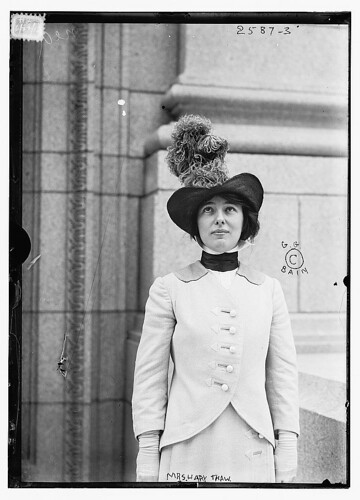I just finished watching Robert Scoble's Getting USA's Treasured Images Onto Flickr video on Scobleizer.tv with Helena Zinkham, who runs the prints and photography division of the Library of Congress. In the video, she talks about how they get images from the library onto Flickr and what that’s done for the library itself.
Since the Library of Congress went live with this project i have been a great fan- and i have been waiting for an update on the status of the project so this video was extremely interesting to me.
Helena is a great story teller- watching the video i felt like i have known her all my life.
She starts off by pointing out that the Library of Congress's (LOC) objective is to preserve knowledge so people can use it and take it beyond the LOC walls- lucky for us.
Part of the conversation is about the actual work to do the digital images (although i thought at one point she mentioned that she was going to show Robert the room but that never comes up in the video. see technical FAQs here if you want to learn more about the how). The LOC's aim is to take the original image and provide a neutral representation- the digital image should look like the actual original photo. They get comments from people who want the LOC to do the colors nicer/brighter/darker- but the LOC is not in the optimization business because that is "very judgmental" Helena says- so they keep the artifact as close to the orginal as possible letting others ("outside the wall") optimize for what they need the photo for such as prints, posters etc.
At one point in the video Helena shows the earliest known photographic portrait of a person which is absolutely beautiful it is of Robert Cornelius ~stunning. (however it is not on Flickr through LOC).
So how did the LOC get to Flickr?
They knew that allowing people to tag content might be useful to get through the over 40,000 pictures that had not been fully cataloged. So they thought about building a web 2.0 application internally for use with the public- but what Flickr brought to the table, was an existing photo friendly, photo loving community. Working with George Oates at Flickr, starting in May 2007 they worked together that summer to put together a process to get the pictures into Flickr.
Flickr had to create a special type of account for the LOC that is now being used by eight public photography archives through their 'The Commons' program - something i did not know existed but looks to have some gems.
The LOC are the stewards of these collections and Flickr had to provide a special Copyright status that means that the Library is unaware of any restrictions on the use of the image.
So what does it mean that they are Bringing Pictures Alive?
Helena talks about the fact that what this has done is bring the collection 'alive' by allowing people to not only add tags- but comments on the pictures that tell personal stories or point out facts about the photo that due to resources catalogers would probably never get a
 chance to research.
chance to research.Here is a perfect example from today's new uploads- this picture of Evelyn Nesbit was posted and within hours a colorful story of her life and times developed in the comments.
During the video, Helena tells a story about this picture of Weavers at Work at the The New York Blind Association and this House in Houston where people went beyond identifying the place that shows how indeed this process is bringing value for the LOC as well as the public.
The one thing that Robert doesn't dig into is how they are going to take the tags and comments specifically to enhance the existing catalog. I would have liked to hear a bit more about some of the results of this additional metadata on the collections outside of Flickr- how are they specifically being incorporated back into the original 'artifacts', what work effort is required? How valuable are the current tags? does it really save catalogers time? or does the metadata noise actually cause more work in the long run?
Helena briefly mentions that the LOC have very gifted catalogers (they do!) - but the volume is just too large to be able to catalog down to the level that the flickr users are doing. It does seem that the LOC is 'manually' enhancing their catalogs, for example this comment where the LOC is corrected and states that they would "update the source data and reload the description".
I have no doubt that the LOC will be sharing more of what they have learned about user tagging collections- but to date there seems to be some real value for both the LOC as well as the public!
And one last note, there was some sound issues late in the video with the volume turning up really loud that gave me a startle so beware!

1 comment :
I have a blog post about the presentation that Helen gave at SAA 2008 out in San Francisco. It has some more details about how they are using the user contributed tags and comments to update the LOC records:
http://www.spellboundblog.com/2008/09/02/saa2008-revealing-archival-collections-at-the-webs-surface-session-102/
Post a Comment